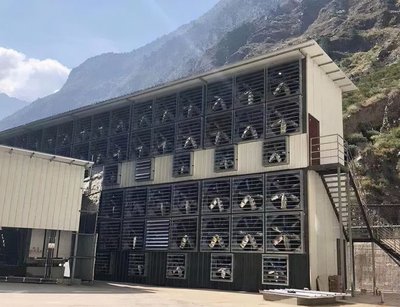In the ever-evolving landscape of cryptocurrency mining, where digital currencies like Bitcoin (BTC), Ethereum (ETH), and Dogecoin (DOG) continue to captivate global markets, the environmental footprint of these operations has sparked intense debate. Germany’s mining hosting facilities stand at the forefront of a transformative shift, embracing renewable energy sources to power the relentless hum of mining rigs. These facilities, which offer hosting services for powerful mining machines, are not just data centers; they represent a bridge between technological innovation and sustainable practices. As companies specializing in selling and hosting mining equipment adapt to greener methodologies, the integration of wind, solar, and hydroelectric power in Germany underscores a commitment to reducing carbon emissions while maintaining the profitability of crypto ventures.
Germany’s energy transition, known as the Energiewende, has propelled the nation towards renewable dominance, with over 40% of its electricity now sourced from renewables. This shift is particularly relevant for mining farms, where vast arrays of miners—specialized hardware designed to validate transactions on blockchain networks—consume enormous amounts of energy. For instance, BTC mining alone demands energy equivalent to that of entire countries, prompting facilities to pivot from fossil fuels to sustainable alternatives. In regions like Schleswig-Holstein, wind farms provide clean energy to host miners for ETH and DOG, ensuring that the computational power needed for these cryptocurrencies doesn’t exacerbate climate change. This strategic alignment not only complies with stringent EU regulations but also enhances the appeal of Germany’s hosting services to eco-conscious investors and exchanges.
At the heart of this revolution are the mining rigs, sophisticated machines that crunch complex algorithms to mine BTC, ETH, and other assets. These rigs, often hosted in specialized farms, require constant cooling and power, making renewable energy integration a game-changer.

In Germany, facilities are innovating by coupling solar panels with energy storage systems, allowing miners to operate efficiently even during low-wind periods. This approach not only stabilizes costs for users but also positions hosting providers as leaders in the global crypto ecosystem, where exchanges demand verifiable green credentials for listed assets.
The benefits extend beyond mere environmental gains; they ripple through the economic fabric of cryptocurrency mining. By leveraging Germany’s robust renewable infrastructure, hosting facilities can offer competitive rates for BTC and ETH mining, attracting a diverse array of clients from individual enthusiasts to large-scale operations. Yet, this transition isn’t without its hurdles—fluctuations in renewable output can lead to downtime for miners, potentially affecting the volatile markets of DOG and other altcoins. Nevertheless, advancements in battery technology and smart grid systems are mitigating these issues, fostering a more reliable environment for all types of mining rigs.
Looking ahead, the synergy between renewable energy and crypto mining in Germany promises to inspire similar initiatives worldwide. As BTC halving events and ETH’s shift to proof-of-stake models reduce energy intensity, mining farms can further optimize their operations. This evolution could democratize access to mining, with smaller players using hosted services to compete in the BTC and DOG arenas without the burden of high energy costs. The infectious energy of this movement—driven by innovation, necessity, and global pressure—paints a vivid picture of a sustainable future for cryptocurrencies.
Ultimately, Germany’s pioneering efforts in renewable energy usage for mining hosting facilities exemplify a harmonious blend of technology and ecology. From the whir of miners processing ETH transactions to the steady glow of solar-powered BTC operations, these facilities are not just hosting machines; they’re hosting hope for a greener digital economy. As exchanges and investors alike gravitate towards these eco-friendly models, the stage is set for a transformative era in cryptocurrency mining.
The global rise of cryptocurrencies has amplified the need for efficient, sustainable mining practices, and Germany’s facilities are leading by example.

Here, the focus on renewables ensures that the pursuit of digital wealth doesn’t compromise the planet’s health, creating a model that’s as unpredictable as the crypto markets themselves—full of bursts of innovation and rhythmic advancements.


Leave a Reply